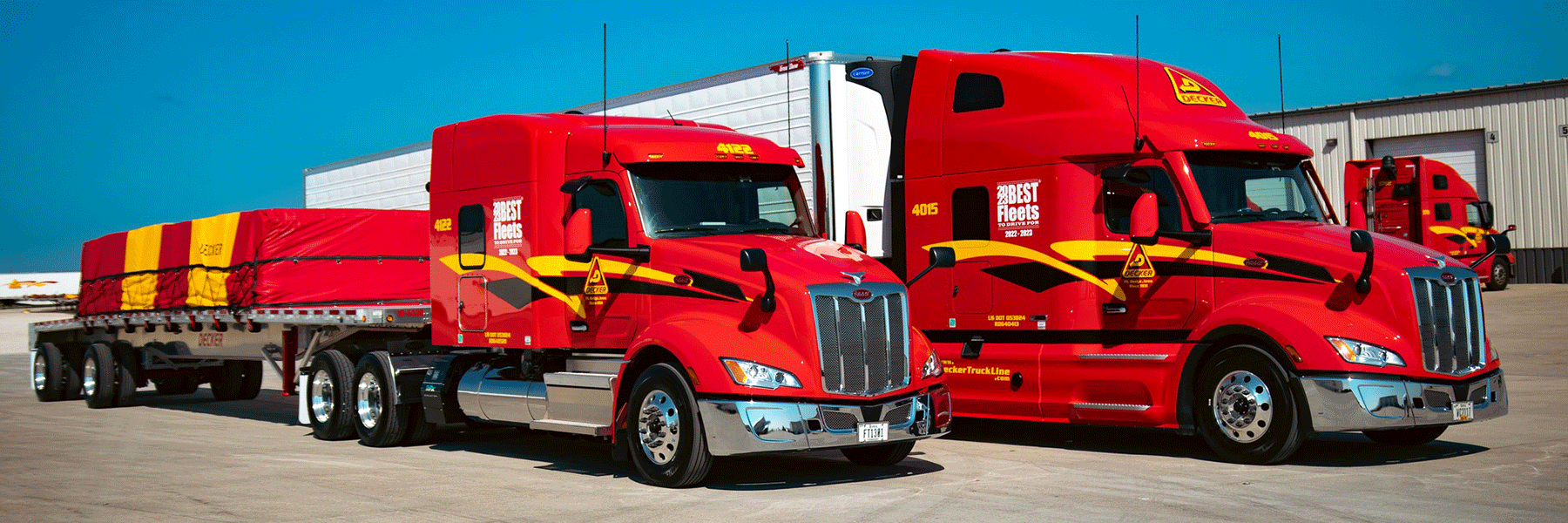If you're a good fleet manager, you're probably always looking for ways to improve working conditions for truck drivers.
Fleet managers have a huge amount of responsibilities. On top of managing schedules, maintaining vehicles, and monitoring drivers, another important task fleet drivers have is finding various ways to improve working conditions for their drivers.
Fleet managers across the United States have been striving to find better ways to improve their employee's overall work experience. Today, we're looking at several ways managers can boost morale and their drivers' working conditions.
Continue reading to learn more.
Why Should Fleet Managers Improve Working Conditions for Truck Drivers
Fleet managers should work to improve the working conditions for their truck drivers for many reasons. A good working environment means more drivers will want to join your fleet, and you'll see a vast improvement in your team's morale, which results in better retention. All of this means less work and hassle for fleet managers!
5 Ways Fleet Managers Can Improve Working Conditions for Truck Drivers
If you want to improve the working conditions for your truck drivers, here’s what you can do:
- Set Clear Expectations at Work
A lack of clarity and confusion in the workplace quickly lowers productivity and lessens efficiency. Not to mention, most employees don't like the feeling of being unsure of their responsibilities. It is mentally draining; you want your fleet members to be as alert and focused as they possibly can be.
Setting clear expectations allows your team to put all their focus on their job. Before your work environment becomes muddled, make sure you are extremely clear with your expectations and that you engage in thoughtful and effective communication with each of your crew members.
- Put Your Crew's Safety First Always
As a fleet manager, your crew's safety should be your number one priority. Paying close attention to your team's stress and fatigue levels and staying on top of vehicle maintenance can help avoid accidents. You don't need to wait for a close call or an accident to actually happen before acting.
Since fatigue and the risk of crashes are directly related, it is critical for fleet managers to pay attention to this and to the wellbeing of their drivers when making the schedules. Even the slightest bit of tiredness can lead to accidents. A fleet manager can create good working conditions and avoid most problems by being proactive rather than reactive.
- Give Your Drivers an Open Mind and Listening Ear
If you're a fleet manager and want to improve working conditions, make sure you view yourself as part of the team, rather than the boss on top; aim to be a mentor instead of someone in a higher operating and powerful position.
Be the kind of manager that puts the sincere needs of team members ahead of profits. Creating an environment where your drivers can openly and honestly communicate is one of the best ways you can improve working conditions. Make sure to really listen to both positive and negative feedback.
Work to cultivate a space where your crew knows they can turn to you if ever an issue comes up, whether it's a personal problem or work-related stress. By supporting your team to the best of your abilities and being an empathetic leader, you can vastly improve working conditions.
- Simplify the Process at Work for Your Team
It's no secret that life on the road is difficult in many ways, which is why great fleet managers make reporting and scheduling as seamless as possible for their teams. The good news is today's time-saving and advanced technology allows truck drivers to perform their routine vehicle inspections digitally. It may be an investment, but it will simplify the process and save you and your team countless hours on the road.
Going digital also helps guarantee that regular checks are actually occurring, which results in a safe and better-maintained fleet. Automating this process means you and your team will have less to stress about, thus improving work conditions.
- Encourage Positive Work-Life Balance, and Mental Health
Life on the road can undoubtedly be taxing on your mental health and extremely lonely. For this reason, it's important for fleet managers to improve working conditions by promoting a positive work-life balance and putting mental health first. Here are some of the ways you can support your drivers in this way:
- Encourage Communication with Family and Friends — A great fleet manager encourages regular communication and connection with their family and friends back home. Physical separation from loved ones can mean an emotional and mental detachment; however, your crew can avoid this by talking or texting with their circle. Equipping your vehicles with Bluetooth technology allows your team to chat on the road, and frequent breaks ensure they can send off texts.
- Encourage Team Interaction — No one knows more how challenging the life of a trucker is than another driver. Getting your crew on their truck radios and conversing with each other is a great way to boost morale on the road.
- Encourage Unwinding Activities — Being alone isn't just the lack of another physical presence; it can also be a mental thing. Great managers encourage unwinding activities that also help ease the feeling of being alone, such as reading a book or watching TV.
Want to Improve Working Conditions for Truck Drivers? Get EpicVue!
If you want to be a great fleet manager and improve working conditions for truck drivers, get your crew EpicVue. EpicVue outfits your vehicles with premium in-cab satellite TV with more than 180 exciting channels.
Making meaningful connections is challenging as a truck driver, but making conversation about the shows you are watching can feel like home. After that, your team is ready to head back out on their routes, feeling recharged, and can enjoy the new memories and friendships they've made, despite the confines of their trucks.
Watching TV can counteract the burdening feelings of isolation. Happy and healthy crew members are much more likely to stay with your team, which drastically reduces the expensive cycle of recruitment and retention. Contact EpicVue to learn more!



